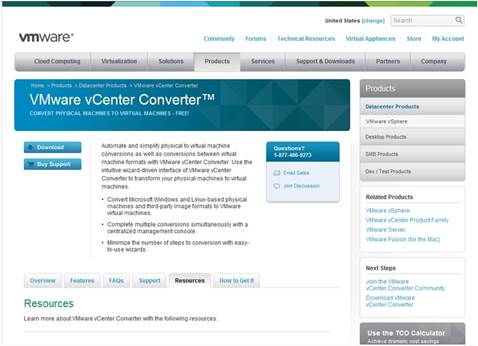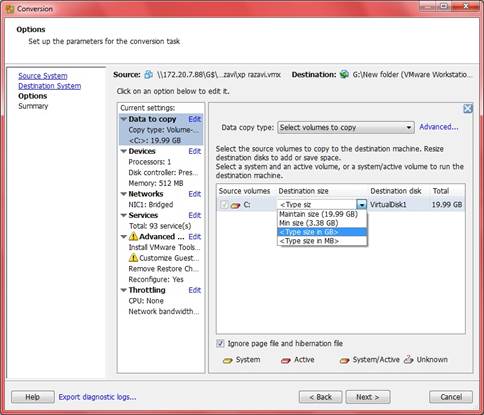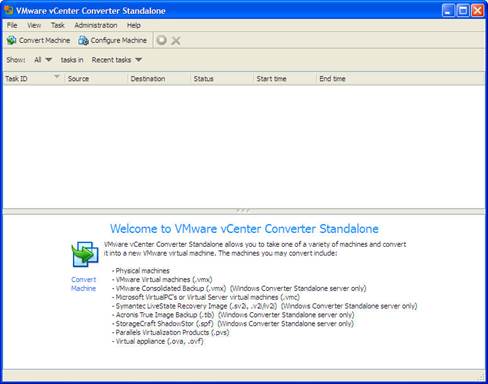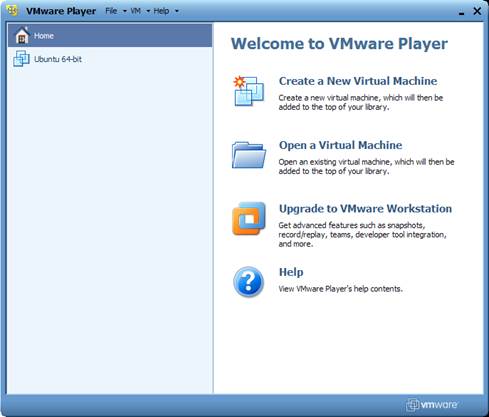We explains how to run an earlier
version of Windows in a VM
The release of any new operating system is
always exciting, but upgrades bring with them the potential for problems and
software incompatibilities.

Using
a combination of VMware vCenter Converter and VMware Player, you can convert
your computer in to a virtual machine, retaining all of your settings,
applications and data
If you have a computer that you’re planning
to upgrade to the latest version of Windows, or you’re thinking about investing
in a new machine with Windows 8 pre-installed, you need to think about the
applications and data you have been working with up until now.
Using a combination of VMware vCenter
Converter and VMware Player, you can convert your computer in to a virtual
machine, retaining all of your settings, applications and data, which you can
then use in Windows 8.
The same can be done with other versions of
Windows if you like, but here we’re looking at creating a virtual machine from
a laptop running Windows 7, which can then be run from within Windows 8 and
used just like a regular computer.
Step-by-step: Create a virtual machine
Keep all your Windows 7 settings and data
secure
1.
Install the converter Start by paying a visit to www.vmware.com/uk.
Once on the website, hover your mouse over the ‘Products’ button in the
navigation bar and click the ‘vCenter Converter’ link in the lower right, under
the heading ‘Free products’. Click ‘Download’ and then follow the instructions
to either create a new VMware account. You can then download the VMware vCenter
Converter software.
2.
Installation options Begin the program installation. You may see a security warning
dialog, in which case you should click ‘Run’. Click ‘Next’ twice and agree to
the terms of the license. Keep clicking ‘Next to move through the wizard, then
choose the option labeled ‘Local installation’. Click the ‘Next’ button one
more time, then select ‘Install’. Once installation is complete, click ‘Finish’
and launch the program.

You
may see a security warning dialog, in which case you should click ‘Run’
3.
Starting machine conversion You’re now ready to begin the conversion process, so click the
‘Convert machine’ button in the program toolbar. Click the ‘Select source type’
drop-down menu and make sure that the ‘Powered-on machine’ option is selected.
Beneath this, select the radio button marked ‘This local machine’ to convert
your PC into a virtual machine then click the ‘Next’ button on the lower right
of the dialog.
4.
Choose conversion type The conversion tool will briefly analyze your PC before displaying
the next screen. Select ‘VMware Workstation or other VMware virtual machine’
from the first drop-down menu and then select ‘VMware Workstation 8.0.x’ from
the second one. Type a name for the virtual machine and click ‘Browse’ to
choose where it should be saved – ideally on an external USB drive before
clicking ‘Next’.
5.
Configure hard drives You can now choose which of your drives and partitions should be
included in the virtual machine by clicking the ‘Data to copy’ link to the
left. You may well want to include all of them, but you can un-tick the box
next to any you would like to exclude. Tick the boxes labeled ‘Ignore page file
and hibernation file’ and ‘Create optimized partition layout’, then click
‘Next’.

You can now choose which of your drives
and partitions should be included in the virtual machine
6.
Set up memory
Click the ‘Device’ link to the left of the dialog and make sure that you are on
the Memory tab to the right. You can now use the up and down arrow buttons to
change the amount of memory that will be assigned to the virtual machine. Try
to get this figure as close to the amount of genuine memory you have installed
as possible.
7.
Check and convert
VMware vCenter Converter will now display a full summary of the settings that
have been chosen, and you can use the ‘Back’ button to change any that you’re
not happy with. Click ‘Finish’ if you’re satisfied with all the settings and
the conversion process will begin. You can now leave your computer for a while,
as the VM conversion process could take a few hours to complete.

VMware vCenter Converter will now
display a full summary of the settings that have been chosen
8.
Install VMware
Player While the conversion is taking place, you could install VMware Player on
your other computer. Grab it by returning to the VMware website, hovering over
the ‘Products’ button and clicking the ‘Player’ link. This time there’s no need
to worry about being signed into your account. When the download is complete,
start the installer and run through the setup process by clicking ‘Next’.
9.
Copy virtual machine When the virtual machine has been created on your first computer,
you’ll need to transfer the VMX file that’s been created on your other machine.
This is where your network connection or USB drive will come in useful. The
converted file is going to be large, so it may take a little while to complete
the transfer. Once it’s done, click the ‘Open a virtual machine’ link in VMware
Player.

VMware
Player
10. Launch your machine Select the VMX file
that you have copied and VMware Player will add the virtual machine to the list
that appears on the left-hand side of the program window. When you want to use
the virtual version of your computer, simply select if from the list and click
the ‘Play virtual machine’ link. You can now continue to enjoy using your old
system on your new computer.